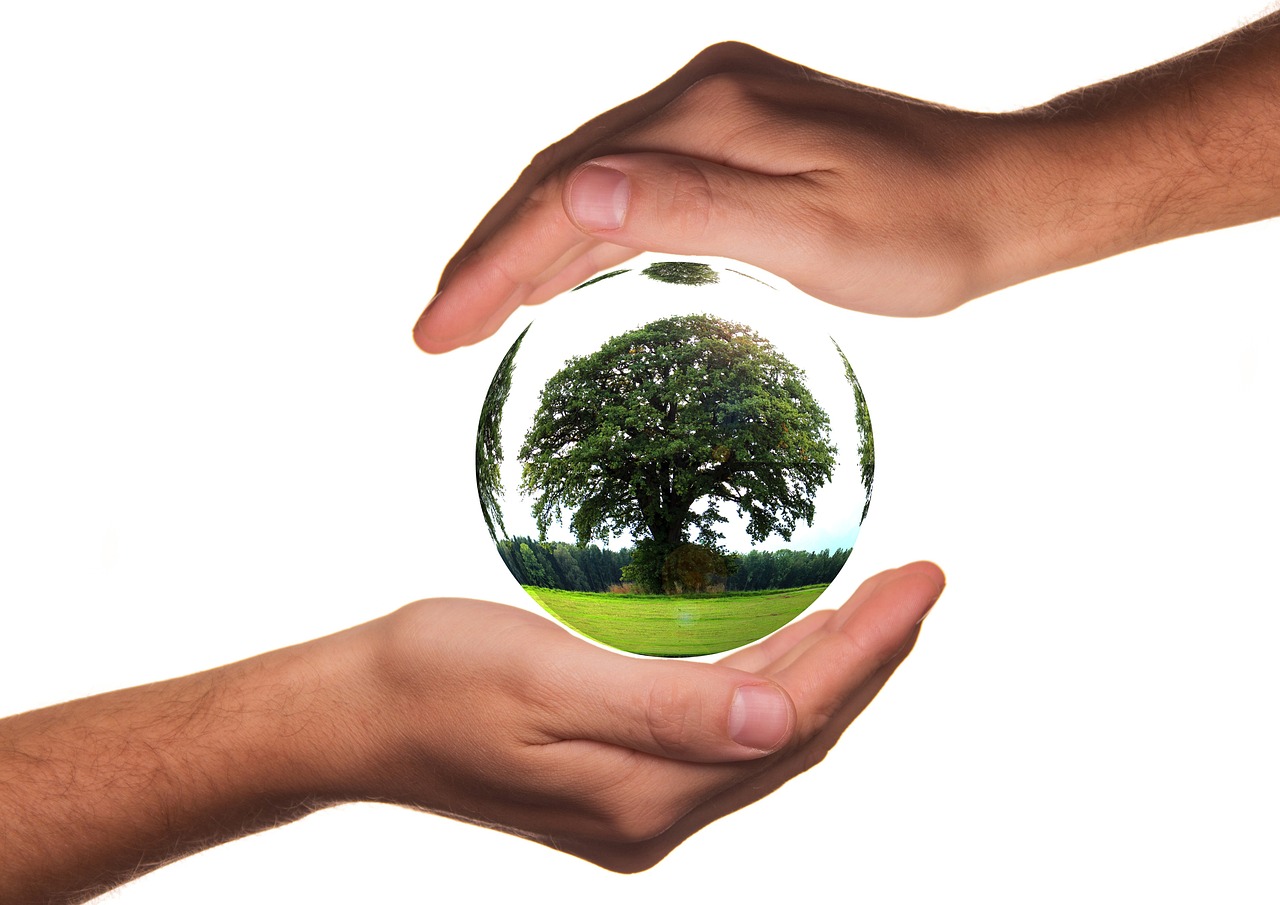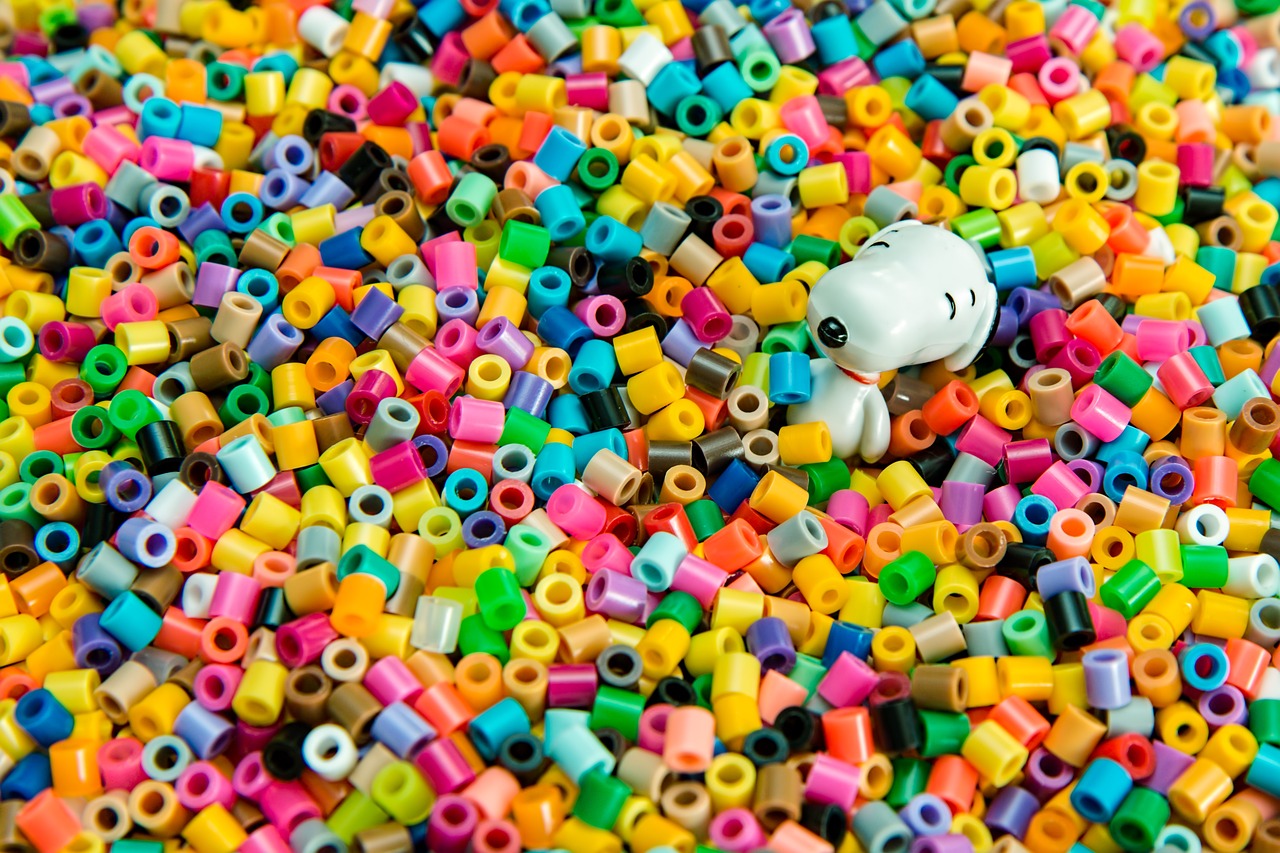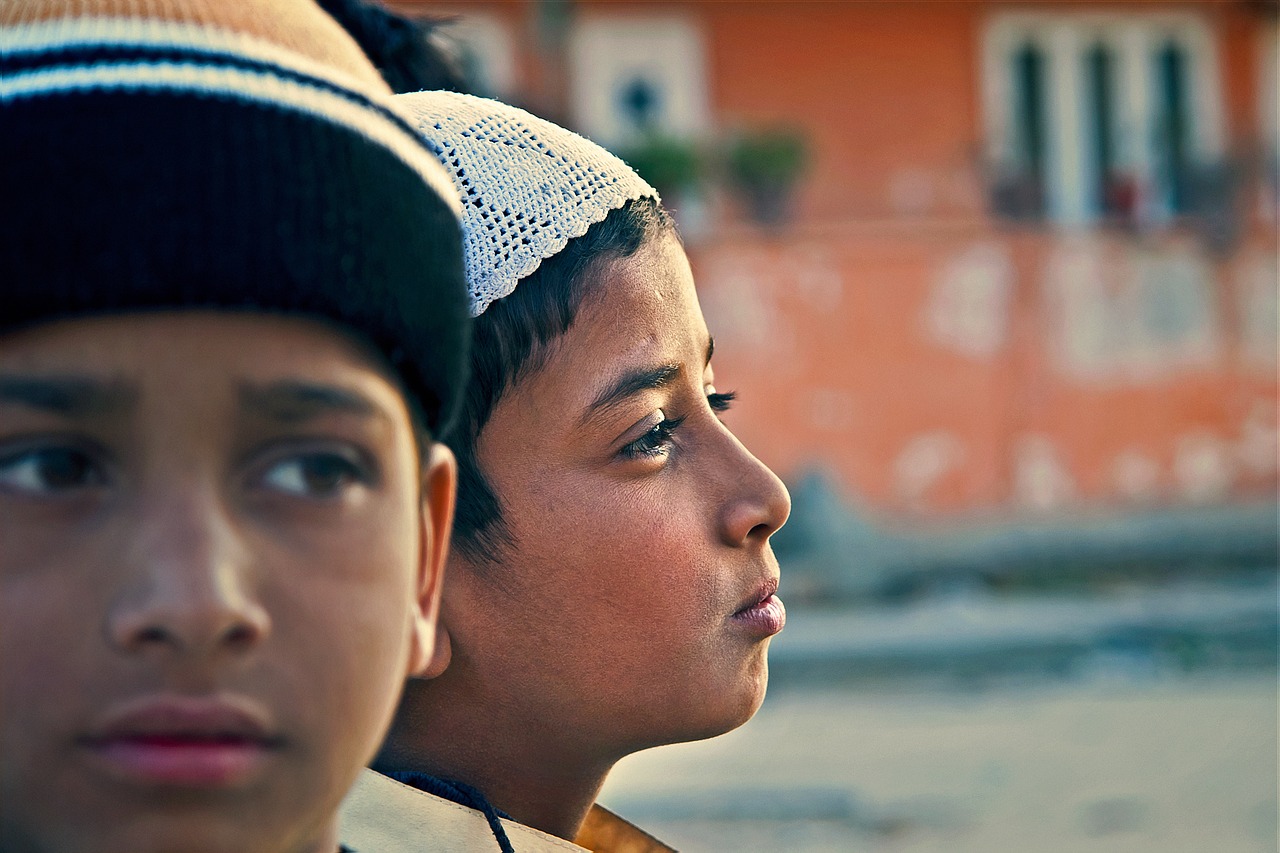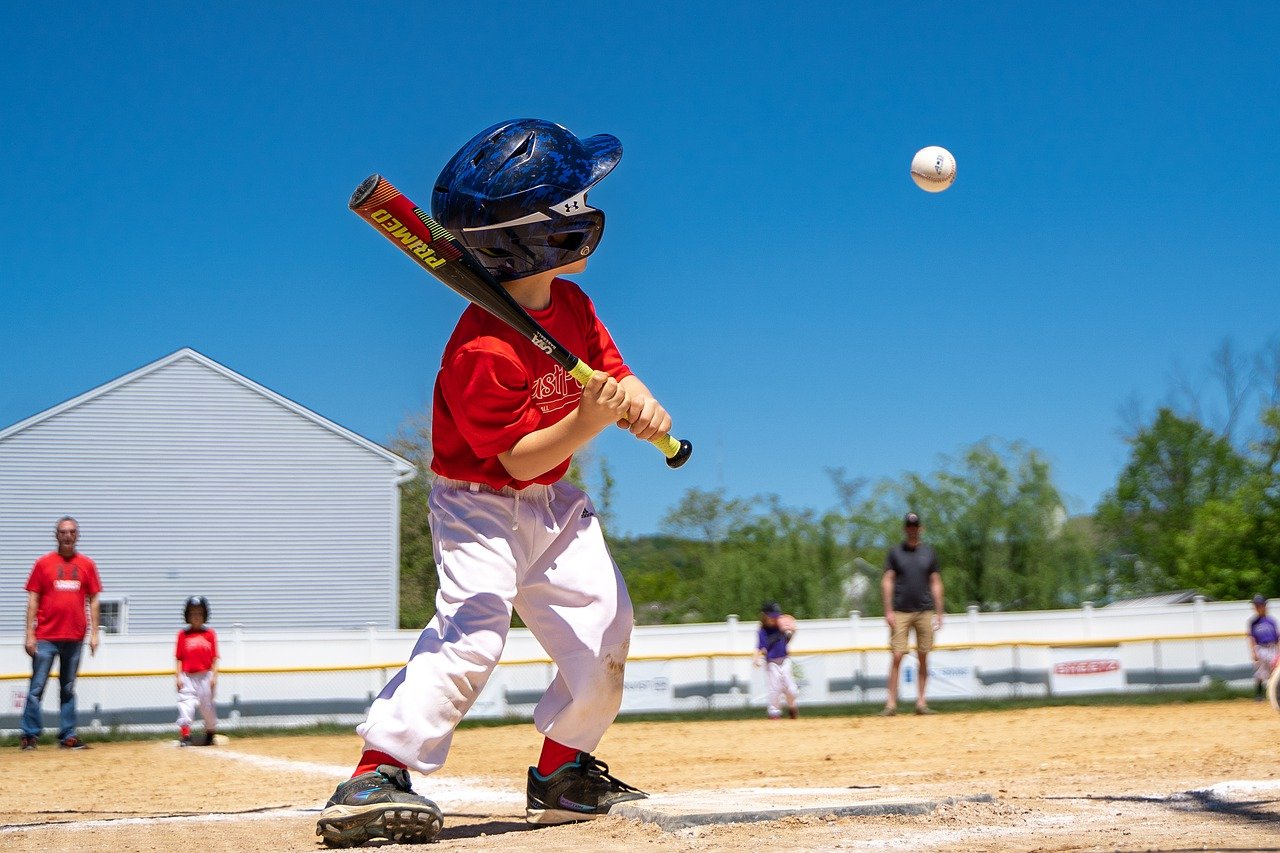How to Inspire the Next Generation to Be Eco-Friendly
In today's world, where climate change and environmental degradation are pressing issues, it's crucial to inspire the next generation to embrace eco-friendly values. But how do we ignite that passion for sustainability in young minds? The answer lies in a multifaceted approach that combines education, engagement, and real-world experiences. By empowering youth with knowledge and practical skills, we can cultivate a sense of responsibility towards our planet. Let's explore effective strategies that can help us achieve this goal.
First, we need to define what eco-friendliness truly means. At its core, eco-friendliness refers to practices that contribute to the health of our planet. This encompasses reducing waste, conserving energy, and protecting natural ecosystems. It's essential for young individuals to grasp the significance of sustainable living, especially as they face a world increasingly impacted by environmental issues. By understanding the importance of their actions, they can become responsible stewards of the environment.
Educational programs are pivotal in inspiring youth to adopt eco-friendly practices. Schools can integrate environmental education into their curriculums, making sustainability a core part of learning. This approach not only informs students about ecological issues but also encourages them to think critically about their role in protecting the environment.
Experiential learning opportunities are particularly effective in connecting students with nature. Activities such as field trips to national parks or local ecosystems can spark curiosity and foster a deeper appreciation for the environment. Workshops that focus on ecological concepts allow students to engage directly with the subject matter, making learning both fun and impactful.
One of the most rewarding experiences for young people is participating in community clean-up events. These activities not only beautify local parks and neighborhoods but also instill a sense of pride and responsibility in participants. When young individuals see the direct impact of their efforts, it reinforces the idea that they can make a difference.
Gardening workshops are another fantastic way to teach children about sustainability. By engaging in hands-on activities, they learn about plant life cycles, the importance of biodiversity, and sustainable practices. Cultivating their own gardens allows them to appreciate where their food comes from, fostering a connection to nature that is often lost in today's fast-paced world.
In our digital age, technology can play a significant role in environmental education. Various apps and online resources promote eco-friendly practices among youth. For example, there are platforms that track personal carbon footprints or provide tips on reducing waste. By utilizing these tools, young people can engage with sustainability in a way that resonates with their tech-savvy lifestyles.
Having eco-conscious role models is vital in shaping young people's attitudes towards sustainability. When they see community leaders advocating for green initiatives, it inspires them to follow suit. Mentorship programs that connect youth with environmental advocates can create powerful connections that motivate the next generation to take action.
Community leaders who actively promote eco-friendly practices serve as living examples of the impact one person can have. Their involvement in local environmental projects not only raises awareness but also encourages youth to engage with their communities. Seeing these leaders in action can ignite a passion for sustainability among young individuals.
Parents play a crucial role in shaping their children's values. Family discussions about environmental issues and sustainable practices can reinforce what children learn at school. Simple actions like recycling at home or reducing water usage can set a powerful example. When children see their parents actively participating in eco-friendly habits, they are more likely to adopt these values themselves.
Encouraging young individuals to adopt sustainable habits can be both fun and rewarding. From recycling to reducing waste, there are countless ways to integrate eco-friendly practices into their daily lives. For instance, creative recycling projects can spark interest in sustainability while teaching the importance of reusing materials.
Engaging in creative recycling projects can demonstrate the significance of reusing materials. Whether it's turning old t-shirts into tote bags or creating art from discarded items, these activities foster innovative thinking among youth. Not only do they learn about sustainability, but they also develop problem-solving skills.
Teaching children about the importance of reducing plastic use empowers them to make conscious choices. By understanding the impact of plastic pollution on marine life and ecosystems, they can become advocates for change. Encouraging the use of reusable bags, bottles, and containers promotes a healthier planet for future generations.
Recognizing and celebrating eco-friendly efforts can motivate young people to continue their sustainable practices. Acknowledgment can come in many forms, from school awards to community recognition. Celebrating these achievements not only reinforces positive behavior but also inspires others to get involved.
Establishing eco-awards in schools can encourage healthy competition and creativity. By rewarding students for their environmentally friendly projects, schools can inspire a culture of sustainability. This recognition can lead to a ripple effect, motivating others to engage in similar initiatives.
Sharing success stories of young environmentalists can inspire peers to take action. When students hear about their classmates making a difference, it creates a sense of camaraderie and encourages them to join in. These stories can be shared through school newsletters, social media, or community events, amplifying the message of environmental stewardship.
Q: How can I get my child involved in eco-friendly activities?
A: Start by introducing simple practices at home, such as recycling, gardening, or participating in local clean-up events. Engage them in discussions about the environment and encourage them to join school programs focused on sustainability.
Q: What are some fun eco-friendly projects for kids?
A: Creative recycling projects, gardening, and nature walks are great ways to engage kids. You can also encourage them to create art from recyclable materials or start a small composting project at home.
Q: How important is parental involvement in promoting eco-friendliness?
A: Extremely important! Parents set the foundation for their children's values. By modeling eco-friendly behaviors and discussing environmental issues, parents can significantly influence their children's attitudes towards sustainability.

Understanding Eco-Friendliness
Understanding eco-friendliness is crucial in today's world, where environmental challenges are more pressing than ever. At its core, eco-friendliness refers to practices and behaviors that are designed to minimize harm to the environment. It's about making conscious choices that contribute to the health of our planet, ensuring that future generations can enjoy its resources just as we do. Imagine living in a world where clean air, fresh water, and vibrant ecosystems are the norm rather than the exception. That's the vision eco-friendliness aims to achieve!
Why is this important? Well, consider the impact of human activities on the environment. From pollution to deforestation, our actions have consequences that can lead to devastating effects on wildlife and natural habitats. By instilling eco-friendly values in young individuals, we not only empower them to make a difference but also help them understand their role as stewards of the Earth. It's like planting a seed; with the right care and attention, it can grow into something beautiful and impactful.
To truly grasp the significance of eco-friendliness, we must recognize the interconnectedness of our actions. For instance, when we choose to recycle, we reduce waste in landfills, conserve natural resources, and lower greenhouse gas emissions. This simple act can have a ripple effect, inspiring others to follow suit. Here are a few key aspects that illustrate the importance of adopting eco-friendly practices:
- Preservation of Resources: Sustainable living helps conserve resources like water, energy, and raw materials, ensuring they remain available for future generations.
- Reduction of Pollution: Eco-friendly practices lead to less waste and lower emissions, contributing to cleaner air and water.
- Climate Change Mitigation: By adopting sustainable habits, we can collectively combat climate change and its associated risks.
In summary, understanding eco-friendliness is about recognizing our responsibility toward the environment and making deliberate choices that reflect that commitment. It's about fostering a mindset that values sustainability and encourages young people to take action. By embracing eco-friendly values, we can inspire the next generation to be proactive in protecting our planet, ensuring a brighter future for all.
Q: What are some simple ways to be eco-friendly?
A: Simple ways include recycling, reducing plastic use, conserving water, and using energy-efficient appliances.
Q: How can I teach my children about eco-friendliness?
A: Engage them in activities like gardening, nature walks, and community clean-up events to instill a love for the environment.
Q: Why is it important to start teaching eco-friendliness at a young age?
A: Teaching children early helps them develop lifelong habits that prioritize sustainability and environmental stewardship.

Engaging Educational Programs
When it comes to inspiring the next generation to embrace eco-friendliness, educational programs play a pivotal role. These programs are not just about imparting knowledge; they are about creating a passion for the environment and instilling a sense of responsibility in young minds. By integrating environmental education into school curriculums, we can provide students with the tools they need to understand the impact of their actions on the planet. Imagine a classroom where discussions about climate change are as common as math problems, where students are taught not only to learn but to act.
One of the most effective ways to engage students is through hands-on learning experiences. This approach allows young people to connect with nature on a personal level. For instance, field trips to local parks or nature reserves can open their eyes to the beauty of the environment, while workshops focused on ecological concepts can solidify their understanding. When students get their hands dirty planting trees or cleaning up a beach, they not only learn about the environment—they experience it.
Experiential learning is crucial in fostering a deeper appreciation for the environment. Activities such as community clean-up events not only beautify local areas but also instill a sense of pride in students. They learn that their actions matter, and they can make a difference. Imagine a group of students, gloves on and trash bags in hand, working together to clean up a park. The laughter, teamwork, and sense of accomplishment create lasting memories that reinforce the importance of caring for our surroundings.
Participating in community clean-up events allows young people to actively contribute to their surroundings, instilling a sense of responsibility and pride in their local environment. These events can be organized by schools, local governments, or environmental organizations. When students see the tangible results of their efforts—like a cleaner park or beach—they feel a sense of ownership and commitment to maintaining that space in the future.
Another engaging educational program is gardening workshops. These sessions teach children about plant life cycles, sustainable practices, and the importance of local food systems. As they dig, plant, and nurture their gardens, they learn valuable lessons about patience, responsibility, and the environment. Not only do they gain practical skills, but they also develop a newfound appreciation for the food they consume. Imagine children eagerly waiting for their first tomato to ripen, understanding that this delicious fruit came from their own efforts.
In today’s digital age, utilizing technology in environmental education can significantly enhance student engagement. There are numerous apps and online resources designed to promote eco-friendly practices among youth. For example, interactive platforms can gamify recycling efforts or track personal carbon footprints, making sustainability fun and approachable. By leveraging technology, we can reach a generation that is already deeply connected to their devices, turning screen time into a powerful tool for environmental change.
| Type of Program | Description | Benefits |
|---|---|---|
| Field Trips | Visits to natural reserves or parks | Enhances appreciation for nature |
| Workshops | Hands-on activities like gardening | Teaches sustainable practices |
| Community Events | Clean-up initiatives | Fosters teamwork and responsibility |
| Technology Integration | Apps for tracking eco-friendly habits | Engages tech-savvy youth |
In conclusion, engaging educational programs are essential for inspiring young people to adopt eco-friendly values. By providing hands-on learning experiences, incorporating technology, and fostering a sense of community, we can equip the next generation with the knowledge and passion needed to protect our planet. The journey towards sustainability starts with education, and it is our responsibility to make it as engaging and impactful as possible.
- How can I get involved in eco-friendly educational programs? You can reach out to local schools or environmental organizations to see how you can volunteer or support existing programs.
- What age group should participate in these programs? Eco-friendly educational programs can be tailored for all age groups, but they are particularly effective for children and teenagers.
- Are there any online resources for environmental education? Yes, many websites and apps offer interactive learning experiences focused on sustainability and environmental stewardship.

Hands-On Learning Experiences
When it comes to teaching young minds about the environment, there’s nothing quite like . Imagine a classroom where the walls disappear, and students are immersed in the great outdoors, feeling the earth beneath their feet and the sun on their backs. This is where true understanding begins! By engaging in activities that connect them directly with nature, children can grasp the essential concepts of ecology and sustainability in a tangible way.
Field trips to local parks, nature reserves, or community gardens allow students to observe ecosystems in action. They can witness the delicate balance of life, from the smallest insects to towering trees, and understand their roles in the environment. These experiences not only foster a sense of curiosity but also cultivate a deep appreciation for nature. It’s one thing to read about the importance of biodiversity in a textbook; it’s another to see it firsthand!
Additionally, workshops that involve planting trees or creating habitats for local wildlife can be incredibly impactful. These activities encourage students to take an active role in environmental stewardship. For example, after planting a tree, they can return to visit it, watching it grow over the years. This instills a sense of responsibility and connection to their environment that is hard to replicate through traditional teaching methods.
Moreover, integrating science and art into these hands-on experiences can enhance learning. Imagine students creating art pieces from recycled materials, or conducting experiments that demonstrate the effects of pollution on plant life. This kind of multi-disciplinary approach not only makes learning fun but also reinforces the message of sustainability in creative ways.
In conclusion, hands-on learning experiences are crucial in shaping eco-conscious behavior among the youth. They provide a platform for students to explore, engage, and understand the world around them. By stepping outside the confines of a traditional classroom, young people can become active participants in the fight for a healthier planet. So, let’s get them outside, rolling up their sleeves, and making a difference!
- What are some examples of hands-on learning experiences for kids?
Examples include field trips to nature reserves, community gardening projects, and workshops on recycling or environmental science.
- How can teachers incorporate hands-on learning into their curriculum?
Teachers can organize outdoor classes, invite guest speakers from environmental organizations, and create projects that require students to engage with their local ecosystems.
- Why are hands-on experiences important for learning about the environment?
These experiences allow students to connect theory with practice, fostering a deeper understanding and emotional connection to the environment.

Community Clean-Up Events
Community clean-up events are not just about picking up litter; they are vibrant gatherings that foster a sense of unity and responsibility among young people. Imagine a sunny Saturday morning, where kids, teens, and adults come together, armed with gloves and trash bags, ready to transform their local park or beach into a pristine environment. These events serve as a powerful reminder that every individual can make a significant difference in their community. By participating in these clean-ups, young people not only contribute to the beautification of their surroundings but also gain a deeper understanding of the impact of waste on the environment.
One of the most rewarding aspects of community clean-up events is witnessing the immediate change in the environment. As participants collect trash, they can see the direct results of their efforts, which can be incredibly motivating. This hands-on experience allows young individuals to connect with their local ecosystem, fostering a sense of pride and ownership over their community. Moreover, these events often serve as a platform for education, where participants learn about the types of waste that are most harmful to the environment, such as plastic, and the importance of proper disposal methods.
To make these events even more engaging, organizers can incorporate fun activities and competitions. For instance, teams can compete to see who can collect the most trash or identify the most unusual item found during the clean-up. Such friendly competition not only makes the event enjoyable but also encourages teamwork and collaboration among participants. Additionally, providing refreshments or small rewards for participants can enhance the experience, making them more likely to return for future events.
Furthermore, community clean-up events can be an excellent opportunity for young people to develop leadership skills. By taking on roles such as team leaders or coordinators, they can learn valuable organizational skills while also inspiring their peers to take action. This kind of involvement can spark a lifelong commitment to environmental stewardship, as young people realize that they have the power to effect change in their communities.
In conclusion, community clean-up events are a fantastic way to inspire the next generation to embrace eco-friendly practices. They provide a unique blend of education, hands-on experience, and community engagement that can leave a lasting impression on young minds. By participating in these events, young individuals not only contribute to a cleaner environment but also cultivate a sense of responsibility and pride in their community, paving the way for a more sustainable future.
- What should I bring to a community clean-up event? It's best to wear comfortable clothes and shoes, and bring gloves, water, and any necessary tools like trash bags.
- How often are these events held? Many communities hold clean-up events seasonally, but some may organize them monthly or even weekly.
- Can I volunteer for a clean-up event if I'm under 18? Absolutely! Many events welcome volunteers of all ages, often with parental consent for younger participants.
- What types of waste are commonly collected during these events? Participants typically collect plastic bottles, wrappers, cans, and other litter that can harm the environment.

Gardening and Sustainability Workshops
Gardening and sustainability workshops serve as an incredible gateway for young individuals to connect with the natural world. Imagine a vibrant garden buzzing with life, where children dig their hands into the soil, planting seeds that will eventually bloom into beautiful flowers or nutritious vegetables. These workshops are not just about getting dirty; they are about understanding the vital role that plants play in our ecosystem and how sustainable practices can lead to a healthier planet.
During these workshops, participants engage in hands-on activities that teach them essential gardening skills, such as planting, watering, and maintaining plants. By nurturing their own gardens, children learn about the plant life cycle and the importance of biodiversity. They discover how plants grow, what they need to thrive, and how they contribute to the environment by producing oxygen and providing habitats for various species.
Moreover, these workshops often incorporate lessons on sustainable gardening practices, such as composting, organic gardening, and water conservation. For instance, kids can learn how to create their own compost bins from kitchen scraps, turning waste into a valuable resource for their gardens. This not only reduces landfill waste but also teaches them the value of recycling nutrients back into the soil.
In addition to practical gardening skills, these workshops foster a sense of community and collaboration. Children often work in groups, sharing responsibilities and learning from one another. This collaborative spirit helps instill a sense of responsibility and teamwork, essential traits for future environmental leaders. By working together, they can create more extensive community gardens, which can serve as a resource for local food banks or schools, further emphasizing the importance of giving back to the community.
To illustrate the impact of gardening workshops, consider the following table showcasing the benefits of participating in these programs:
| Benefits of Gardening Workshops | Description |
|---|---|
| Environmental Awareness | Participants learn about ecosystems, biodiversity, and the importance of plants in maintaining a healthy environment. |
| Life Skills | Children develop responsibility, patience, and teamwork skills as they care for their gardens. |
| Health Benefits | Gardening encourages physical activity and promotes healthy eating habits by growing their own fruits and vegetables. |
| Community Engagement | Workshops foster a sense of community, allowing participants to collaborate and contribute to local initiatives. |
In conclusion, gardening and sustainability workshops are a powerful way to inspire the next generation to embrace eco-friendly practices. By equipping young people with the knowledge and skills they need to cultivate their own gardens, we empower them to appreciate the environment and understand their role in protecting it. As they watch their efforts yield fruits and flowers, they also cultivate a lasting respect for nature and a commitment to sustainability that can last a lifetime.
Q: What age group is suitable for gardening workshops?
A: Gardening workshops can be tailored for various age groups, typically starting from as young as 5 years old to teenagers. Activities can be adjusted to match the skill level and interest of the participants.
Q: Do participants need prior gardening experience?
A: No prior experience is necessary! Workshops are designed to teach all participants, regardless of their background, the basics of gardening and sustainability.
Q: How can I find a gardening workshop in my area?
A: Check local community centers, schools, or environmental organizations. Many offer seasonal workshops or ongoing programs aimed at teaching gardening skills.
Q: What materials do participants need to bring?
A: Most workshops provide the necessary materials, but participants may be asked to bring gloves, water bottles, or specific seeds if they have preferences.

Incorporating Technology
In today's digital age, technology is not just a tool; it's a gateway to enhancing our understanding of the world around us. When it comes to inspiring the next generation to embrace eco-friendliness, technology can play a pivotal role. Imagine a world where young minds harness the power of apps, online resources, and interactive platforms to learn about sustainability. This approach can make environmental education not only accessible but also engaging and fun!
One of the most impactful ways to incorporate technology is through educational apps designed specifically for environmental learning. For instance, apps like Earth Hero and Oceanscape allow students to explore ecological concepts through interactive challenges and real-world scenarios. These platforms encourage users to track their carbon footprints, learn about recycling, and even participate in local conservation efforts—all from the comfort of their devices.
Moreover, online resources such as webinars and virtual workshops can connect young individuals with environmental experts and activists. This exposure not only broadens their knowledge but also instills a sense of community and shared responsibility. Imagine a virtual field trip where students can interact with marine biologists studying coral reefs or conservationists working to protect endangered species. Such experiences can ignite a passion for the planet that lasts a lifetime.
Additionally, social media platforms can serve as powerful tools for spreading awareness and mobilizing youth. Creating campaigns that encourage young people to share their eco-friendly actions, like reducing waste or planting trees, can foster a culture of sustainability. By using hashtags and engaging content, these campaigns can reach a wider audience, inspiring others to join the movement. Think of it as a digital ripple effect—one small action can lead to a wave of change!
To summarize, incorporating technology into environmental education not only enhances learning but also empowers young individuals to take action. By leveraging apps, online resources, and social media, we can create a generation that is not just aware of environmental issues but is also equipped with the tools to make a difference. The future of our planet depends on it!
- How can I encourage my child to use eco-friendly apps? Start by exploring popular apps together, discussing their features, and setting goals for sustainable actions.
- Are there specific online resources for environmental education? Yes! Websites like National Geographic Kids and EcoKids offer a wealth of information and activities.
- How can social media promote eco-friendly practices? Social media can be a platform for sharing success stories, promoting challenges, and connecting with like-minded individuals.

Role Models and Mentorship
When it comes to inspiring the next generation to embrace eco-friendliness, the influence of role models and mentors cannot be overstated. Young people are often on the lookout for figures to emulate, and having eco-conscious mentors can significantly shape their attitudes toward sustainability. Imagine a young child watching their favorite teacher passionately discussing the importance of recycling and composting; that enthusiasm is contagious! Such experiences can ignite a spark of curiosity and commitment to environmental stewardship.
Community leaders, activists, and even local business owners who advocate for green initiatives can serve as powerful examples. They demonstrate that eco-friendly practices are not just theoretical concepts but practical, actionable steps that can lead to meaningful change. For instance, seeing a local entrepreneur utilizing sustainable materials in their business can inspire young minds to think creatively about how they, too, can contribute to a healthier planet.
Moreover, mentorship programs that connect youth with environmental professionals provide a unique opportunity for hands-on learning. These relationships often foster a deeper understanding of ecological issues and inspire young individuals to pursue careers in environmental science, conservation, and sustainability. Imagine a budding environmentalist learning directly from a scientist who studies climate change; the knowledge gained from such interactions can be transformative!
Parents also play a crucial role in this mentorship dynamic. Family discussions about environmental issues can reinforce the values taught by external mentors. When children see their parents practicing eco-friendly habits—like reducing waste, conserving water, or choosing sustainable products—they are more likely to adopt these behaviors themselves. It's a powerful cycle of influence that starts at home and extends into the community.
To facilitate this mentorship, communities can organize events that bring together young people and eco-conscious leaders. Workshops, seminars, and community forums can create spaces where knowledge is shared, and passion for the environment is cultivated. These interactions can lead to a network of eco-advocates committed to making a difference.
In summary, the role of mentors in promoting eco-friendly values cannot be underestimated. By showcasing real-life examples of sustainable living and providing guidance, mentors can inspire young individuals to become responsible stewards of the environment. Whether through community leaders or parental involvement, the message is clear: together, we can nurture a generation that prioritizes the health of our planet.
- Why are role models important for promoting eco-friendliness?
Role models provide tangible examples of sustainable practices, encouraging young people to adopt similar behaviors. - How can parents influence their children's eco-friendly habits?
Parents can model sustainable practices at home, engage in discussions about environmental issues, and participate in eco-friendly activities together. - What are some effective mentorship programs focused on sustainability?
Programs that connect youth with environmental professionals, community leaders, and local activists can provide valuable insights and inspiration. - How can communities support eco-friendly mentorship?
Communities can organize workshops, seminars, and events that bring together young people and eco-conscious leaders to share knowledge and experiences.

Community Leaders as Examples
When we think about inspiring the next generation to embrace eco-friendliness, the role of community leaders cannot be overstated. These individuals often serve as the backbone of local initiatives, championing sustainable practices and advocating for environmental stewardship. Imagine a local mayor who not only talks about reducing carbon footprints but also implements programs that encourage public transportation, bike lanes, and community gardens. This kind of leadership is powerful—it shows young people that eco-friendly practices are not just ideals, but achievable goals.
Community leaders can influence youth in numerous ways. For instance, when they participate in local clean-up events or sustainability workshops, they set an example that resonates deeply with young minds. They transform abstract concepts into tangible actions, making it easier for kids to understand the importance of caring for their environment. This hands-on involvement can ignite a passion for sustainability that lasts a lifetime.
Moreover, community leaders often have the platform to share success stories and highlight the positive impacts of eco-friendly initiatives. For example, a community leader might showcase how a neighborhood reduced waste by 30% through a new recycling program. Such stories can inspire youth to think critically about their own habits and the role they play in the larger ecosystem. It’s like planting a seed of curiosity and responsibility that can grow into a lifelong commitment to the planet.
Additionally, community leaders can collaborate with schools to integrate environmental education into the curriculum. By inviting guest speakers or organizing joint projects, they can enrich students' understanding of sustainability. This collaboration not only benefits students but also strengthens community bonds, creating a shared sense of purpose. When young people see their leaders actively engaged in eco-friendly practices, it encourages them to follow suit.
To further illustrate the impact of community leaders, consider the following examples:
| Community Leader | Initiative | Impact on Youth |
|---|---|---|
| Mayor Jane Doe | City-Wide Recycling Program | Increased student involvement in recycling efforts. |
| Councilman John Smith | Community Garden Project | Educated children about plant life cycles and healthy eating. |
| Local Activist Sarah Brown | Monthly Clean-Up Drives | Fostered a sense of pride and responsibility in local youth. |
In conclusion, community leaders serve as vital examples for young people, demonstrating that eco-friendly practices are both necessary and attainable. By actively engaging in sustainable initiatives and sharing their experiences, they can inspire the next generation to take action and become responsible stewards of the environment. This ripple effect of leadership can create a more sustainable future, one that is filled with individuals who care deeply about the planet and their role in preserving it.
Q: How can community leaders effectively engage youth in eco-friendly initiatives?
A: Community leaders can engage youth by organizing hands-on projects, collaborating with schools, and sharing success stories that resonate with young people.
Q: What role do parents play in supporting community leaders' efforts?
A: Parents can support by encouraging their children to participate in community events and by discussing the importance of sustainability at home.
Q: How can young people become community leaders themselves?
A: Young people can become leaders by volunteering, starting their own eco-friendly initiatives, and advocating for sustainable practices within their schools and communities.

Parental Involvement
When it comes to inspiring the next generation to be eco-friendly, is absolutely crucial. Parents are often the first teachers in a child's life, and their actions and discussions can lay the groundwork for a child's understanding of the environment. Imagine a young child watching their parent sort recyclables or discuss the importance of turning off lights when leaving a room. These small but significant actions speak volumes and can create a lasting impression on young minds.
Engaging in conversations about sustainability at home is a fantastic way to instill eco-friendly values. Parents can start by sharing simple yet impactful practices that promote a greener lifestyle. For instance, discussing why it's important to reduce plastic use, or explaining the benefits of composting food scraps can spark curiosity. Children are naturally inquisitive, and when parents provide answers to their questions, it fosters a deeper understanding of environmental issues.
Moreover, parents can actively involve their children in various eco-friendly activities. Here are some engaging ways to do so:
- Family Recycling Days: Set aside a day each month to sort through household items that can be recycled or repurposed. This not only teaches children about recycling but also encourages teamwork!
- Nature Walks: Take family walks in local parks or nature reserves. Discuss the plants and animals you encounter, emphasizing the importance of preserving natural habitats.
- Gardening Together: Start a small garden at home. This hands-on experience teaches children about where their food comes from and the significance of nurturing plants.
Additionally, parents can lead by example. Actions often speak louder than words. If children see their parents making conscious choices—like using reusable bags, conserving water, or choosing public transportation—they're more likely to adopt similar behaviors. It’s like planting seeds of eco-consciousness that will grow as they mature.
Furthermore, involving children in community initiatives can greatly enhance their understanding of environmental stewardship. Parents can encourage their children to participate in local clean-up drives or tree-planting events, allowing them to witness the positive impact of collective action. These experiences can be incredibly fulfilling and instill a sense of pride in contributing to the community.
In summary, parental involvement is a powerful tool in nurturing eco-friendly values in children. By engaging in meaningful conversations, modeling sustainable behaviors, and participating in community activities, parents can inspire the next generation to become responsible stewards of the environment. The journey to a greener planet starts at home, and every small effort counts!
Q: How can I start teaching my child about eco-friendliness?
A: Begin with simple discussions about recycling and energy conservation. Engage them in activities like sorting recyclables or turning off lights. Making it a fun learning experience will encourage their interest.
Q: What are some eco-friendly activities we can do as a family?
A: Consider activities like family gardening, nature walks, or participating in local environmental events. These activities not only teach important lessons but also strengthen family bonds.
Q: How can I encourage my child to reduce plastic use?
A: Lead by example! Use reusable bags, bottles, and containers. Discuss the impact of plastic on the environment and challenge them to come up with creative alternatives.

Encouraging Sustainable Practices
Encouraging young individuals to embrace sustainable practices is not just about teaching them to recycle or conserve water; it’s about instilling a mindset that values the planet and its resources. To make this happen, we need to engage them in ways that resonate with their daily lives and interests. For instance, when children learn the significance of recycling, they don't just see it as a chore; they begin to understand that each bottle or can they recycle contributes to a larger cause—protecting our environment. This shift in perspective is crucial.
One effective way to inspire sustainable habits is through creative recycling projects. By turning trash into treasure, children can unleash their creativity while learning the importance of reusing materials. Imagine a group of kids transforming old newspapers into beautiful art pieces or constructing bird feeders from plastic bottles. Such activities not only make recycling fun but also demonstrate the tangible benefits of reducing waste. Plus, when they see their creations, it boosts their confidence and reinforces the idea that they can make a difference.
Another essential practice to encourage is reducing plastic use. With the alarming rise of plastic pollution, it’s vital to teach children about the impact of single-use plastics. This can be done through simple yet effective methods. For example, parents and educators can organize workshops that show kids how to make their own reusable bags from old t-shirts. This hands-on experience not only equips them with practical skills but also empowers them to make conscious choices in their daily lives. When they opt for reusable containers over plastic ones, they are actively participating in the fight against pollution.
Moreover, incorporating discussions about sustainability into everyday conversations can have a profound impact. Whether it’s during family dinners or casual chats, discussing the importance of eco-friendly practices helps reinforce these values. Parents can share stories about their own sustainable choices, like composting or using public transportation, making it relatable for kids. This method not only normalizes eco-friendly behavior but also encourages children to share their thoughts and ideas, fostering a culture of environmental responsibility within the family.
To further support these efforts, schools can play a pivotal role by integrating sustainability into their curriculums. Imagine a school where students not only learn about the environment in science class but also engage in projects that have real-world implications. For instance, a school could initiate a “green week” where students participate in various activities such as planting trees, organizing recycling drives, or even creating a community garden. Such initiatives not only teach students about sustainability but also cultivate a sense of community and responsibility.
In conclusion, encouraging sustainable practices among the youth is a multifaceted approach that requires creativity, engagement, and community involvement. By making sustainability fun and relatable, we can inspire the next generation to become responsible stewards of the environment. It’s not just about teaching them what to do; it’s about helping them understand why it matters. After all, when young people feel empowered, they are more likely to take action and inspire others to do the same.
- What are some simple ways to teach kids about recycling? Start with fun projects like creating art from recyclables or organizing a neighborhood clean-up.
- How can schools promote eco-friendly practices? Schools can integrate environmental education into their curriculums and organize sustainability-themed events.
- Why is it important to reduce plastic use? Reducing plastic helps combat pollution and protect wildlife, contributing to a healthier planet.
- What role do parents play in encouraging sustainable habits? Parents can model eco-friendly behaviors and engage their children in discussions about sustainability.

Creative Recycling Projects
Engaging young minds in is not only a fun way to spark interest in sustainability but also a powerful method to teach valuable lessons about resourcefulness and environmental responsibility. Imagine a world where every discarded item is seen as a treasure waiting to be transformed! By encouraging kids to look at waste through a different lens, we can cultivate a generation that values creativity and eco-friendliness.
One effective way to introduce recycling projects is through hands-on activities that allow children to express their creativity while learning about the importance of reusing materials. For instance, consider organizing a “Trash to Treasure” workshop where participants can bring in items they would typically throw away, such as plastic bottles, old newspapers, or cardboard boxes. During the workshop, they can be guided to create new, functional, or artistic items from these materials. This not only teaches them about recycling but also encourages them to think critically about waste and its impact on our planet.
Here are a few exciting project ideas that can be implemented in schools or community centers:
- Upcycled Planters: Transforming plastic containers into vibrant planters not only beautifies the environment but also encourages gardening, which is a fantastic way to connect with nature.
- Recycled Art Installations: Organizing a community art project where participants create large installations using recycled materials can foster teamwork and creativity while sending a strong message about sustainability.
- DIY Reusable Bags: Teaching kids to sew or decorate old t-shirts into reusable shopping bags can help reduce plastic waste while giving them a practical item they can use every day.
Furthermore, these projects can be enhanced by incorporating educational components that explain the environmental benefits of recycling. For example, before starting a project, facilitators can hold a brief discussion about the lifecycle of materials and the impact of waste on ecosystems. This not only enriches the experience but also deepens their understanding of the broader implications of their actions.
In addition to fostering creativity, these recycling projects can also cultivate a sense of community. When children work together on a project, they learn the value of collaboration and collective responsibility. They begin to see that their actions can have a positive impact, not just on their immediate surroundings but on the world at large. By celebrating their creations through exhibitions or community showcases, we can further motivate them to continue their eco-friendly endeavors.
Ultimately, engaging in creative recycling projects is a fantastic way to inspire the next generation. It encourages them to think outside the box, appreciate the value of resources, and understand their role in protecting the environment. As they transform trash into treasure, they are not just creating art or functional items; they are becoming the eco-warriors of tomorrow!
Q: What age group is suitable for creative recycling projects?
A: Creative recycling projects can be adapted for various age groups, from young children to teenagers. The complexity of the projects can be adjusted based on the participants' age and skill level.
Q: How can I organize a recycling project in my community?
A: Start by gathering interested participants and selecting a project idea. Secure a location, gather necessary materials, and promote the event through local schools, community centers, and social media to attract more participants.
Q: Are there any costs associated with these projects?
A: While some projects may require materials, many can be done with items that participants already have at home. You can also seek donations from local businesses or community members to cover costs.

Reducing Plastic Use
In today's world, the **overuse of plastic** has become a significant environmental challenge that affects everyone, especially the younger generation. Teaching children the importance of reducing plastic use is crucial in shaping a sustainable future. But how do we effectively impart this vital lesson? It starts with understanding the pervasive nature of plastic in our daily lives. From the moment we wake up to the time we go to bed, plastic is everywhere—think of your toothbrush, water bottles, and even food packaging. By highlighting these everyday items, we can help young individuals recognize the **impact of plastic waste** on our planet.
One engaging way to teach kids about reducing plastic is through **interactive discussions**. For instance, parents and educators can initiate conversations about the different types of plastic, their uses, and the consequences of plastic pollution. This can be enhanced by using visual aids, such as charts or infographics, that illustrate the staggering amounts of plastic that end up in oceans and landfills each year. When young people see the data, it often sparks a sense of urgency and responsibility.
Moreover, incorporating **practical activities** can make the learning experience more memorable. For example, organizing a "Plastic-Free Challenge" can encourage children to go a week without using single-use plastics. This challenge can be accompanied by a journal where they document their experiences, feelings, and any hurdles they encounter. Not only does this foster a sense of accountability, but it also allows them to discover alternatives to plastic, such as reusable bags, stainless steel water bottles, and biodegradable products.
To further emphasize the importance of reducing plastic use, consider creating a **community project** where kids can participate in a local clean-up event. This hands-on experience not only helps them understand the consequences of plastic waste but also empowers them to take action. They can see firsthand the amount of plastic that accumulates in their neighborhoods, which can be a real eye-opener. Following the clean-up, discussions about recycling and the importance of making eco-friendly choices can reinforce the lessons learned.
Additionally, educational programs can incorporate **creative arts** to engage young minds. For instance, art classes can focus on creating sculptures or crafts from recycled materials. This not only teaches children about reusing plastic but also allows them to express their creativity. When they create something beautiful from what would otherwise be waste, it drives home the point that we can transform our relationship with plastic.
Finally, it’s essential to encourage **peer discussions** about reducing plastic use. When children share their experiences and strategies with friends, it creates a ripple effect. They can inspire each other to come up with innovative solutions, such as starting a recycling club at school or advocating for less plastic packaging in their favorite stores. By fostering a community of young eco-warriors, we can amplify their impact and cultivate a generation that values sustainability.
- Why is reducing plastic use important? Reducing plastic use is crucial for protecting our environment, wildlife, and human health. Plastics take hundreds of years to decompose, leading to pollution and harmful effects on ecosystems.
- What are some alternatives to single-use plastics? Some alternatives include reusable shopping bags, stainless steel or glass water bottles, cloth napkins, and beeswax wraps for food storage.
- How can schools promote reducing plastic use? Schools can promote reducing plastic use by implementing educational programs, organizing clean-up events, and encouraging students to participate in recycling initiatives.

Celebrating Eco-Friendly Achievements
Recognizing and celebrating eco-friendly achievements is not just about giving a pat on the back; it's about motivating the next generation to continue their sustainable practices. When young individuals see their efforts acknowledged, it creates a sense of pride and accomplishment that can ignite a lifelong passion for environmental stewardship. So, how can we effectively celebrate these achievements? Here are a few impactful strategies that can be implemented in schools and communities.
First off, establishing eco-awards within schools can create a buzz of excitement and healthy competition among students. These awards can recognize a variety of categories such as "Best Recycling Project," "Outstanding Community Service," or "Most Innovative Eco-Friendly Idea." Not only do these awards encourage students to engage in environmentally friendly projects, but they also foster a sense of community as students work together to achieve common goals.
Moreover, sharing success stories of young environmentalists can have a profound impact. When students hear about their peers making a difference—be it through organizing a community garden, leading a clean-up drive, or innovating a recycling initiative—they are inspired to take action themselves. Consider creating a monthly newsletter or a dedicated section on the school website to highlight these stories. This not only showcases the achievements but also allows students to learn from one another, sparking new ideas and collaborations.
Additionally, hosting an annual Eco-Fair can serve as a fantastic platform for celebrating eco-friendly achievements. At this event, students can present their projects, share their experiences, and engage the community in discussions about sustainability. Imagine a vibrant atmosphere filled with interactive booths, workshops, and presentations where students can demonstrate their knowledge and passion for the environment. Not only does this event celebrate their hard work, but it also raises awareness about environmental issues in the broader community.
To further amplify the impact, schools can collaborate with local businesses and organizations to sponsor these celebrations. This partnership can provide resources, funding, and even mentorship opportunities for students. When local businesses take an interest in the eco-friendly initiatives of young people, it sends a powerful message about the importance of sustainability in the community.
In conclusion, celebrating eco-friendly achievements is essential in nurturing the next generation of environmental stewards. By recognizing their efforts, sharing inspiring stories, and creating engaging platforms for celebration, we can motivate young individuals to continue their journey towards sustainability. After all, when we celebrate their achievements, we’re not just applauding their hard work; we’re planting the seeds for a greener future.
- Why is it important to celebrate eco-friendly achievements? Celebrating these achievements motivates young people to continue their sustainable practices and fosters a sense of community and pride.
- How can schools implement eco-awards? Schools can create various award categories and establish criteria for judging projects, encouraging students to participate and innovate.
- What role do community events play in celebrating achievements? Community events like Eco-Fairs allow students to showcase their work, engage with the community, and raise awareness about environmental issues.
- How can success stories inspire others? Sharing success stories can motivate peers to take action by illustrating real examples of how individuals can make a difference.

Eco-Awards and Recognition
Establishing eco-awards in schools is a fantastic way to ignite a spark of enthusiasm among students about environmental stewardship. Imagine a world where young minds are not only aware of their impact on the planet but are also celebrated for their efforts to make a difference! By recognizing students' contributions, we create a culture that values and promotes eco-friendly practices. This recognition can take many forms, from certificates and trophies to public acknowledgments during school events.
In many schools, eco-awards can be categorized into different areas of achievement. For instance, awards could be given for:
- Creative Projects: Recognizing innovative ideas that promote sustainability.
- Community Service: Honoring students who actively participate in local environmental initiatives.
- Academic Excellence: Acknowledging students who excel in environmental science or related subjects.
These awards not only foster a sense of competition but also encourage students to think outside the box. When students see their peers receiving accolades for their eco-friendly projects, it inspires them to contribute as well. It creates a ripple effect, where one student's success motivates another to step up and take action. Schools can organize award ceremonies that highlight these achievements, inviting parents and community members to witness the impact of their young environmentalists.
Moreover, sharing success stories of award recipients can amplify the message. Schools can create newsletters or social media posts that showcase these young achievers, detailing their projects and the positive changes they’ve made. This not only boosts the confidence of the award winners but also serves as a source of inspiration for others. By celebrating eco-friendly achievements, we are not just acknowledging hard work; we are building a community of environmentally conscious individuals who are eager to learn and grow.
In conclusion, eco-awards and recognition are powerful tools in nurturing the next generation of environmental stewards. They provide motivation and validation for young people, encouraging them to embrace sustainable practices and share their passion with others. As we celebrate their achievements, we pave the way for a brighter, greener future.
Q1: What are eco-awards?
A1: Eco-awards are recognitions given to individuals, particularly students, for their efforts and achievements in promoting environmental sustainability and eco-friendly practices.
Q2: How can schools implement eco-awards?
A2: Schools can implement eco-awards by establishing criteria for various categories, organizing award ceremonies, and promoting the achievements through newsletters or social media.
Q3: Why are eco-awards important?
A3: Eco-awards are important because they motivate students to engage in environmentally friendly practices, foster a sense of community, and create role models for their peers.
Q4: Can eco-awards be given outside of schools?
A4: Absolutely! Community organizations, local governments, and environmental groups can also establish eco-awards to recognize individuals or groups making a positive impact on the environment.

Sharing Success Stories
One of the most powerful ways to inspire young people to embrace eco-friendly practices is by of individuals and groups who have made a significant impact on the environment. These stories serve as a beacon of hope and motivation, illustrating that change is not only possible but also achievable. When young people see their peers taking action, it resonates with them on a personal level, igniting a desire to contribute to the cause. For instance, consider the story of a group of high school students who initiated a recycling program in their school. They started small, collecting plastic bottles and paper, but their efforts quickly gained traction. Within a year, their school reduced waste by over 50%, and they were recognized at a local environmental conference. This kind of achievement not only boosts the students' confidence but also encourages others to think creatively about how they can make a difference.
Moreover, these success stories can be shared through various platforms, such as social media, school newsletters, or community bulletins. By highlighting these achievements, we create a positive feedback loop where young people feel empowered to share their own experiences and initiatives. This can lead to a cascade of eco-friendly actions within their communities. Imagine a scenario where students from different schools collaborate to tackle local environmental issues, inspired by stories they’ve heard from their peers. The ripple effect of sharing these narratives can transform individual actions into a collective movement toward sustainability.
Additionally, schools and community organizations can host events where young environmentalists share their journeys. These gatherings can include presentations, workshops, or even panel discussions, allowing students to connect and learn from one another. By creating a platform for these voices, we not only celebrate their achievements but also foster a sense of community and shared purpose. It’s essential to encourage young people to document their efforts—be it through blogs, vlogs, or social media posts—so that their stories can reach a wider audience. This not only amplifies their impact but also inspires others to take similar steps toward a more sustainable future.
In conclusion, sharing success stories is a vital strategy in inspiring the next generation to adopt eco-friendly practices. By showcasing real-life examples of young individuals making a difference, we can motivate others to join the movement. When young people see that their actions can lead to tangible results, they are more likely to engage in environmentally responsible behaviors. So, let’s celebrate these heroes of sustainability and encourage a culture of sharing and learning within our communities!
- How can I find success stories to share? You can look for local environmental groups, school projects, and online platforms dedicated to sustainability. Many organizations publish success stories on their websites.
- What impact do success stories have on youth? Success stories can inspire and motivate young people by showing them that their efforts can lead to real change, making them feel empowered to take action.
- Can success stories be shared in schools? Absolutely! Schools can create newsletters, host assemblies, or even have dedicated bulletin boards to showcase these stories.
Frequently Asked Questions
- What does it mean to be eco-friendly?
Being eco-friendly means making choices that are good for the environment. It involves using resources in a way that doesn't harm nature, like reducing waste, conserving water, and using sustainable products. Think of it as living in harmony with the Earth, where our actions today don't compromise the ability of future generations to thrive.
- How can educational programs help inspire eco-friendly values in youth?
Educational programs can play a pivotal role by integrating environmental education into school curriculums. They provide students with hands-on learning experiences, such as field trips and workshops, that connect them with nature. These programs help young people understand ecological concepts and the importance of sustainability, making them more likely to adopt eco-friendly habits.
- What are some effective hands-on learning experiences for students?
Hands-on learning experiences include community clean-up events, gardening workshops, and nature walks. These activities allow students to engage directly with their environment, fostering a sense of responsibility and appreciation for nature. For instance, participating in a local clean-up not only beautifies the community but also instills pride and a sense of ownership in young participants.
- How can technology enhance environmental education?
Technology can enhance environmental education through apps and online resources that promote eco-friendly practices. For example, there are interactive games that teach recycling, or platforms that connect students with local environmental initiatives. By utilizing technology, educators can make learning about sustainability more engaging and accessible to young people.
- Why is having role models important for promoting eco-friendliness?
Role models are crucial because they demonstrate the impact of eco-friendly practices in real life. When young people see community leaders or family members actively participating in sustainable actions, they are more likely to adopt similar behaviors. It’s like having a guiding star; it shows them the way and inspires them to follow suit.
- What are some practical ways to encourage sustainable habits in children?
Encouraging sustainable habits can be as simple as teaching kids about recycling, reducing plastic use, and conserving energy. Creative projects, like making art from recycled materials, can spark interest and show them the importance of reusing. By integrating these practices into daily life, children can learn to make conscious choices that benefit the planet.
- How can we celebrate eco-friendly achievements among youth?
Celebrating eco-friendly achievements can motivate young people to continue their sustainable practices. Schools can establish eco-awards or recognition programs that highlight students’ contributions to environmental initiatives. Sharing success stories of young environmentalists can also inspire their peers, creating a ripple effect of eco-conscious behavior.



















